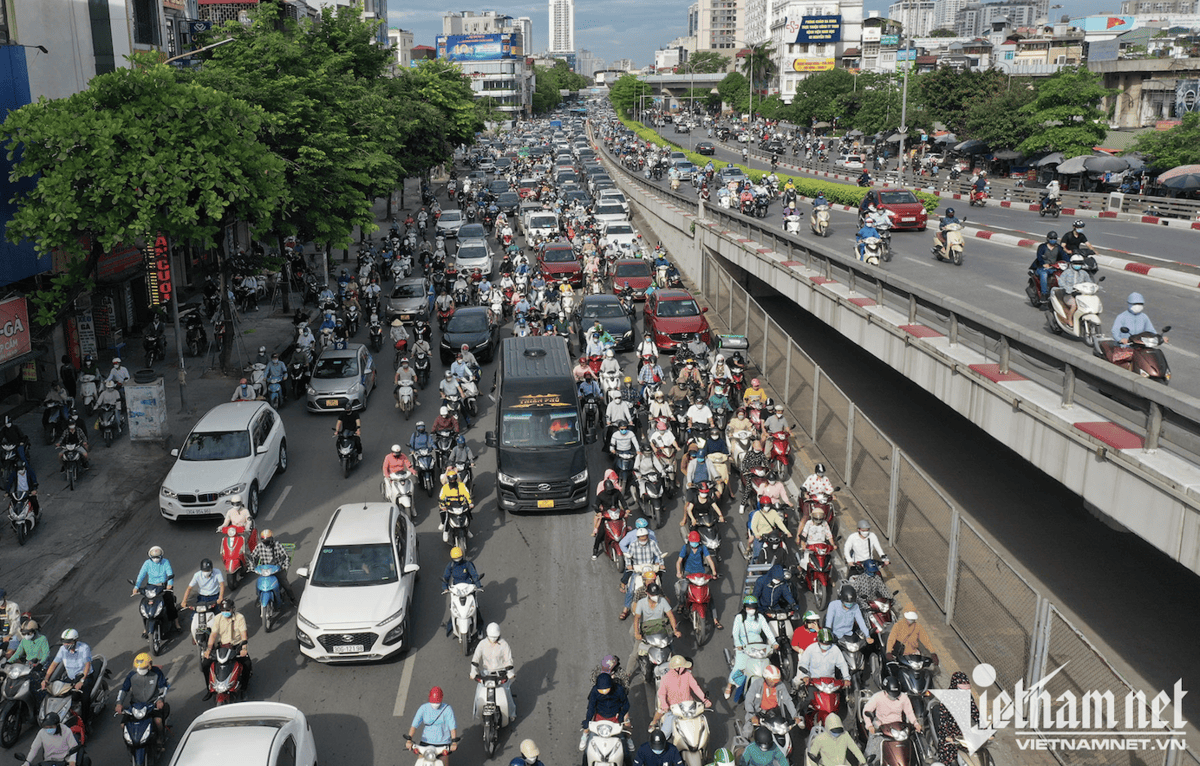
At a recent seminar on "Air Pollution and Traffic: Opportunities, Challenges for Vietnam and the World," Ho Quoc Bang from the HCM City National University noted that the major pollutants in HCM City and Hanoi are from industrial production and transportation.
According to Bang, more than 6 million motorbikes, 690,000 cars, 2,000 factories and road traffic emit NOx (87 percent), CO (92 percent ), SO2 (57 percent), NMVOC (86 percent), CH4 (96 percent), and PM2.5 (74 percent).
Meanwhile, industrial production produces 39 percent of SO2 emissions in Hanoi.
As for HCM City, there are nearly 7.4 million motorbikes, 400,000 cars, and 2,780 industrial facilities emitting pollutants. Traffic is the major source of pollutants, such as NO2, CO (97.8 percent), SO2 (37.7 percent), NMVOC (42.9 percent), CH4, and fine dust PM2.5 (18 percent).
HCM City has a fine dust index of 3, while Hanoi index is 3-4, according to Bang.
Prof Yafang Cheng from the Max Planck Institute for Chemistry in Germany said when people breathe deeply, they are inhaling tens of thousand to millions of fine dust particles in the air, which is the cause of millions of death worldwide.
Analysing risk assessments and comparing them with the impact caused by Covid-19, Cheng found that pollution is at a serious level and needs prompt action.
Daniel Kammen from the University of California, Berkeley stressed the need to enhance solutions to ease air pollution.
Air pollution is a serious problem in many areas, with transport being the primary source of urban smog and environmental degradation. The process of shifting toward green transportation, like EVs, is showing opportunities and challenges in the effort to improve air quality.
Prof Daniel Kammen noted that many countries, including the UK, US and China, have begun using EVs on a large scale. Notably, California has committed not to sell emitting vehicles from 2030. In San Francisco, technology is promoted so that EVs can access social equality, allowing all people to access EVs.
Hoang Duong Tung, chair of the Vietnam Clean Air Network, pointed out that private transport is the major cause of air pollution. There are many motorbikes and cars running with fossil fuel. But there is still no regulation stipulating emission control. As a result, many motorbikes with black smoke still can circulate in traffic.
If each car and motorbike on the road is considered a mobile emission station, Vietnam has nearly 80.6 million such emission stations.
On the afternoon of December 6, at the 20th conference of the Hanoi People's Council, Nguyen Ngoc Viet, Chief Secretariat of the People's Council, noted that environmental pollution, air pollution, waste and transport are some of the most concerning issues.
The council is expected to review and pass a resolution detailing conditions, criteria, and procedures for identifying low-emission zones in Hanoi.
Under the draft resolution, only non-emission vehicles, environmentally friendly motor vehicles using clean and green energy, and those with licenses from authorities will be allowed to circulate in low-emission zones. Heavy diesel-run trucks would be banned from traveling in these zones.
The draft says vehicles not meeting Euro 4 and motorbikes not meeting Euro 2 emission standards may be banned from low-emission zones at certain times of the day.
Hanoi is also considering imposing fees and charges on motor vehicles circulating in low-emission zones.
In 2025-2030, the city plans to pilot low-emission zones in an area of Hoan Kiem district. From 2031 onwards, low-emission zones in will have to comply with low-emission standards.
Amid increased air pollution, the Hanoi People's Committee recently approved the "scheme for developing a public transport system using electric and green energy buses",
Starting early 2025, based on proposals from transport units and approval by the Hanoi People's Committee, four transport units will implement procedures to invest in and operate five electric bus routes (with 76 buses) to establish standards and unit prices for medium- and small-capacity electric buses.
The total number of vehicles projected to be converted in 2026-2030 will be 1,813. By 2035, Hanoi plans to convert 50 percent of its buses to electric buses; and 50 CNG/LNG run vehicles.
The total estimated budget for implementing the plan is VND48.625 trillion. Of this, VND35.996 trillion will be from Hanoi’s budget, and VND12.629 billion will be arranged by businesses themselves.
Dinh Hieu